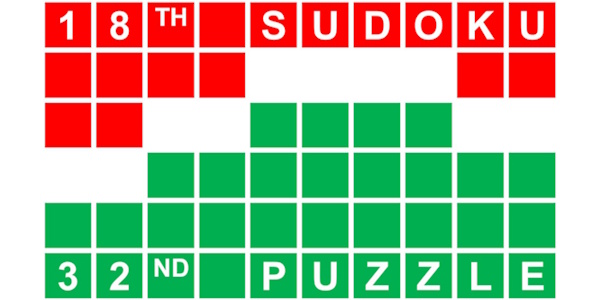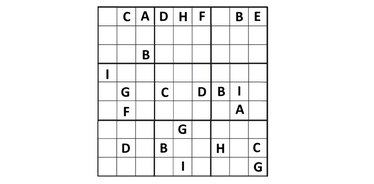We're going to keep talking about the techniques and strategies that champions use to solve Sudoku puzzles.
The key to the scheme is to work on one column, one row, and one square at a time. How does this technique work? As we mentioned earlier, we used the "hanging fruit" method to fill in two squares. The goal was to find the easiest areas and fill them in.
Once we've entered the values in the squares, we move on. We need to know which numbers to write in which squares. One of the great things about Sudoku is that as you fill in the boxes, you start to see new possibilities emerge.
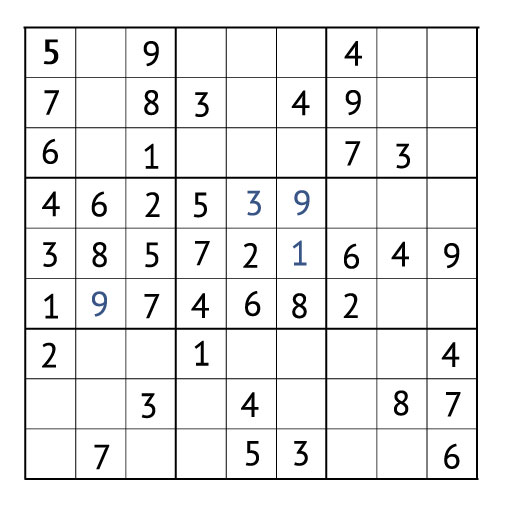
Focus on one square
Let's take a look at what's going on in the center row. Let's focus on the right column and the bottom row. We've got the values 1, 9, 7, 4, 6, 8, and 2 here. If we use the method of elimination, we can see that we need a three and a five here. We keep that info in mind and take a look at the squares next to it. Next, we need to look at the numbers in the squares and see where we can insert 3 and 5. Let's take a look at the top right square. The middle column has a 3, so it's clear that a 5 should go there. We place the three to the right of the five.
This makes it easier to figure out what values to put in the square. By eliminating other possibilities, we can narrow it down to 1, 7, and 8. What should we put in the open cells? Once more, let's take a look at the squares at the top and bottom. There's room for seven in the right and left columns. We put the seven in the middle column at the top.
So, we managed to place the numbers 3, 5, and 7. Once we've done that, the Sudoku game board looks like this.
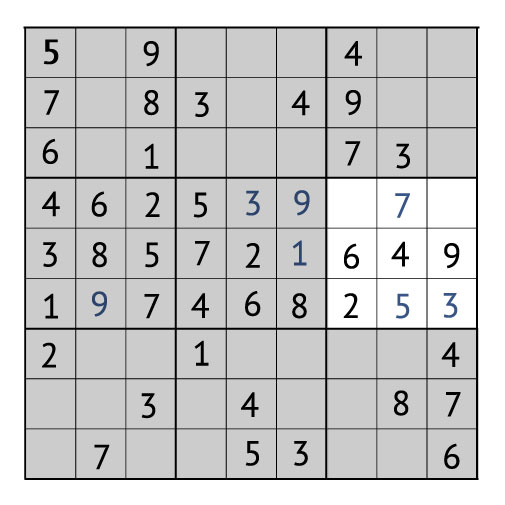
We can't use the method of elimination to figure out how to put the remaining values in the right center square, since 7, 6, 4, 9, 2, 5, and 3 are already there. Let's take a look at what happens when we put the first and second values in the square.
There's a square in the bottom right that has 8, 4, 7, and 6 in it. So, we need to put 1, 2, 3, 5, and 9 in there. There are quite a few numbers to consider. We just need to figure out where they fit. To do this, we just need to look at the neighboring squares in the bottom row. At this point, we need to look for intersections. A quick look shows us that the triple is in both the first and second squares below. We also have a 3 in the top right of the square, so we can go ahead and write it in the upper left of the bottom right square.
As it turns out, we now have the values 3, 8, 4, 7, and 6 in the bottom right square. We just need to figure out how to place 1, 2, 5, and 9. Let's take a look at what we have with 5. We can see that 5 is present in both the middle square on the right (the middle column in the bottom row) and the middle square at the bottom. Given all that, we don't have a lot of options. Five is next to seven and eight under the number three.
So we already have 3, 5, 8, 4, 7, and 6 in the square. We just need to add 1, 2, and 9. Let's take a look at the upper rows of the squares on the left and in the center. As you can see, the top row of the bottom square is asking for a nine. This will help us finish the square quickly. We just need to figure out where to put 1 and 2. It's pretty clear that the two should go in the left column of the middle square. So, we just need to write a one. By using the method of elimination, we can figure out where to insert the two. For example, a few details in the grid give us a heads-up on what to do next.
What we have done, what to do next
Let's take a look at the middle right square, which depends on the bottom square. It looks like we can fill in the left column, since it already has 8 of the 9 digits (1, 2, 3, 4, 5, 6, 7, and 9). So, we just need to find eight more. To solve the puzzle, we just write the number 8 and then the number 1 in the middle right square. This is what the game board looks like once we've made our changes.
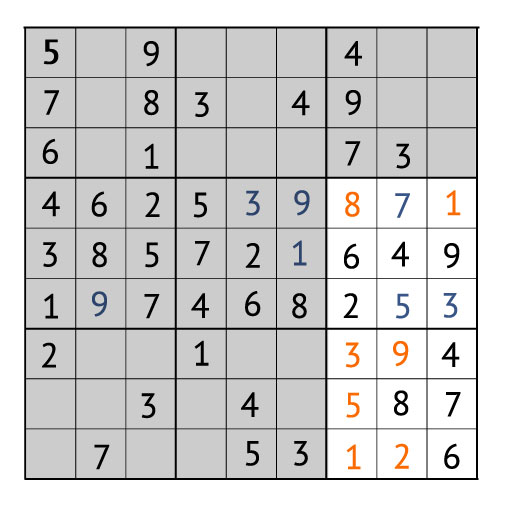
We started with the columns, lines, and squares and gradually filled them in. So far, we've got four of the nine squares filled in with numbers. We just have to get through the remaining five. In the next tutorial, we'll share some tips and tricks on how to do this quickly and easily.
